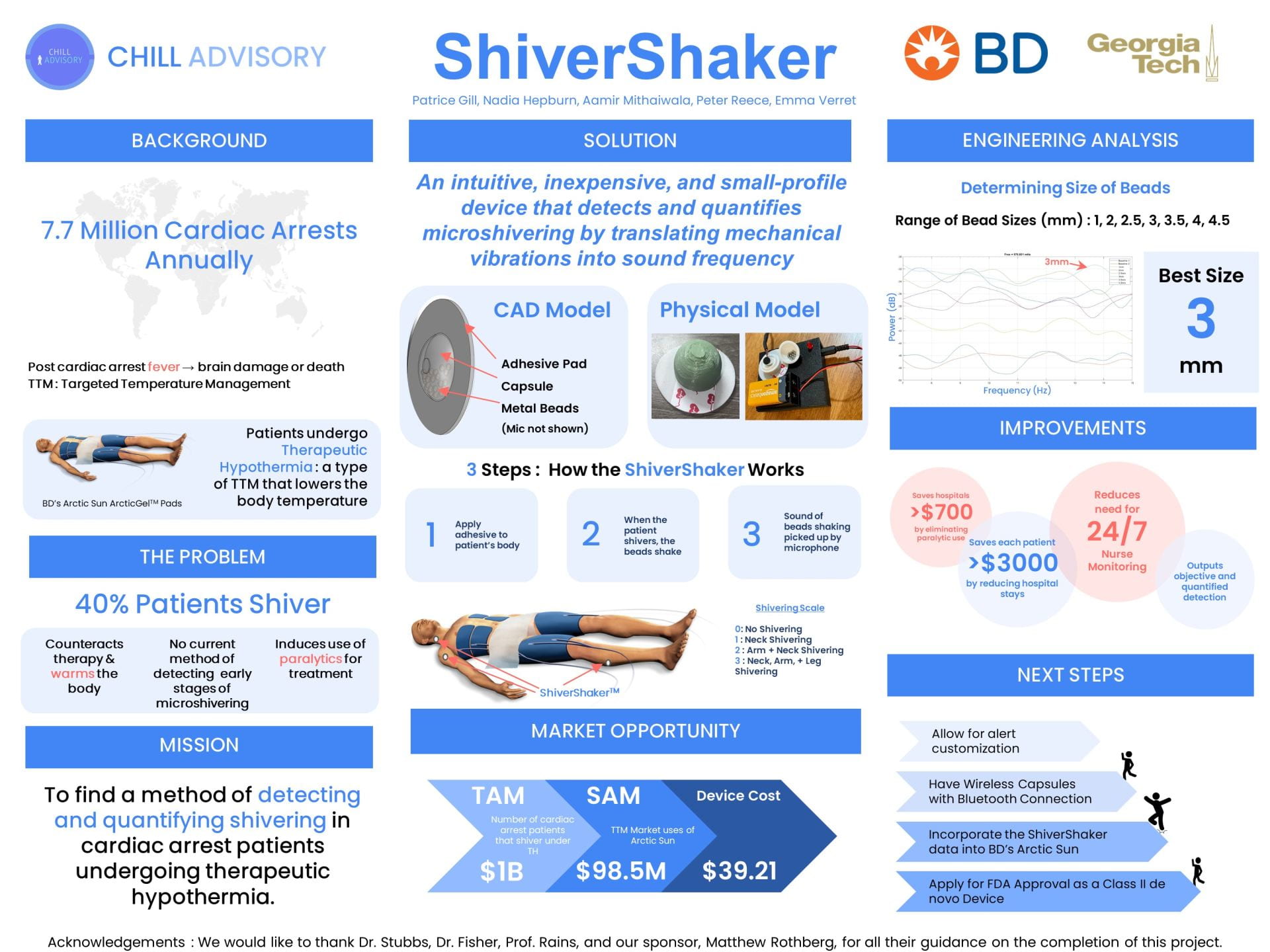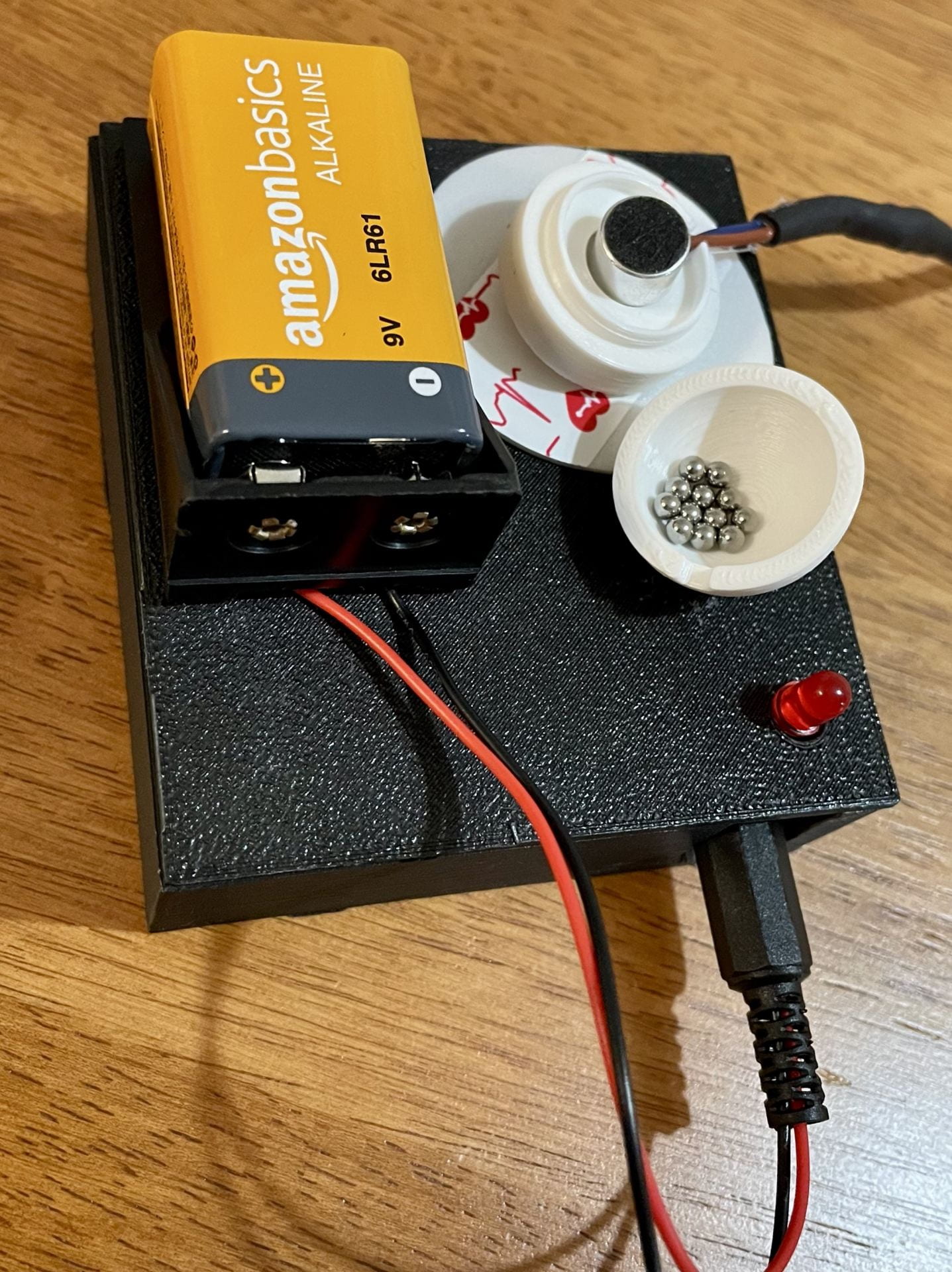Get to know our team on LinkedIN:
Chill Advisory
Detecting shivering during therapeutic hypothermia to improve patient Neurological and cardiac outcomes
Project Description:
We are Chill Advisory, a team sponsored by Becton, Dickinson, and currently, we are working on a device that will detect and quantify shivering in cardiac arrest patients undergoing therapeutic hypothermia. Yearly in the U.S., over 350,000 people experience out of hospital cardiac arrests, with very few chances of survival. Of the individuals that do survive, they can experience declines in their neurologic health, facing movement disorders, memory loss, neurogenic fever, brain swelling, and even death. To prevent these complications, patients undergo hypothermia therapy which aims to lower the patient’s body temperature quickly to reduce the rates of metabolic reactions so that they can use the unused resources for recovery. However, almost half of the procedure’s patients experience shivering, raising their body temperature and nullifying the therapy’s benefits. This is where our device, the ShiverShaker, comes in. It consists of a capsule with steel ball bearings inside, attached to the patient with an adhesive pad. Once attached, the beads inside the capsule shake whenever the patient does, creating a sound that gets picked up by an internal microphone which then transfers mechanical vibration into sound frequency. The ShiverShaker is comprised of cost-effective materials and is unlike any other device on the market, we’re really shaking things up and tapping into an unaddressed issue. Detecting shivering, especially in its early stages, is key to protecting a patient’s safety, and current methods of doing so are insufficient. With the ShiverShaker, we can prevent unneeded paralytic usage and extended hospital stays, avoiding further harm to patients and saving thousands of dollars. Avoiding up to $3000 a night in the ICU and the uncertainty between scheduled monitoring sessions can be a major relief for the families of patients in this scenario and we think our device can provide such relief.



